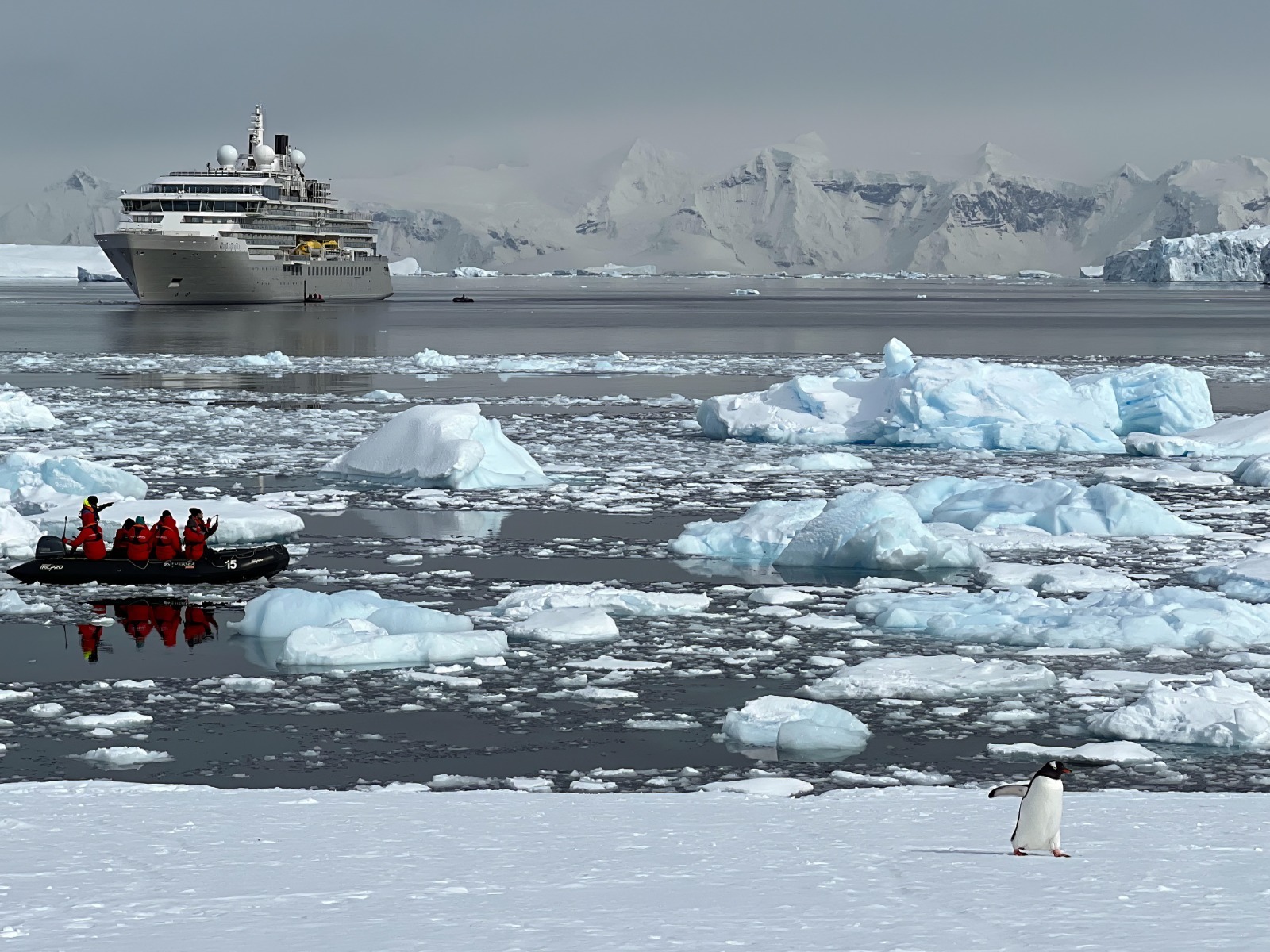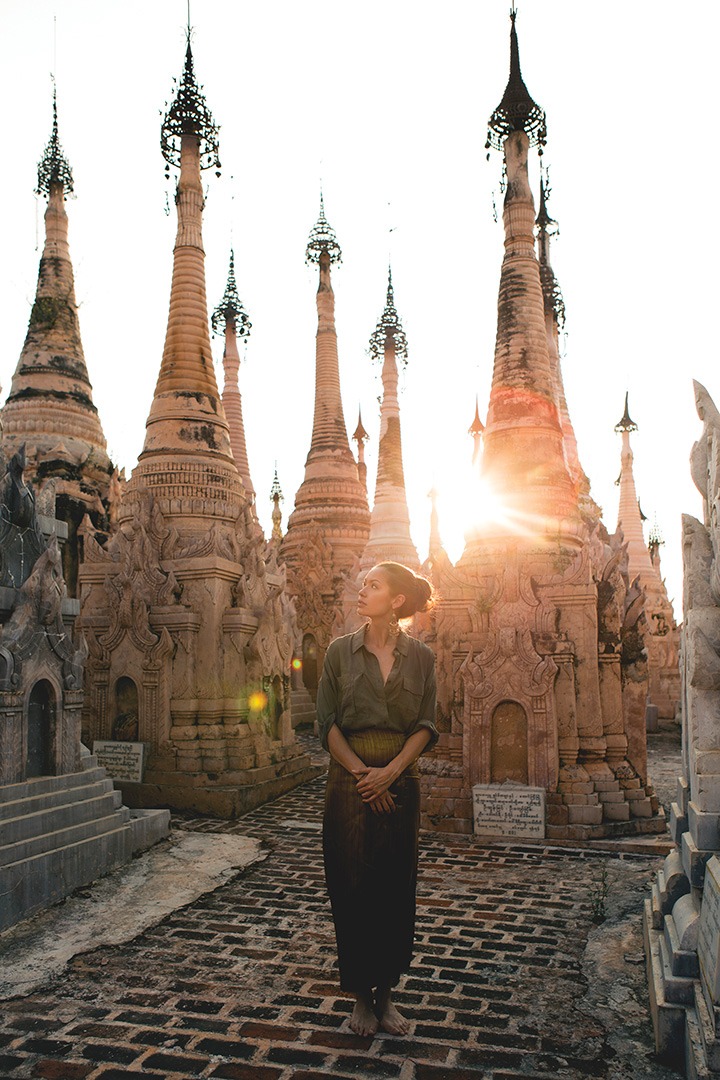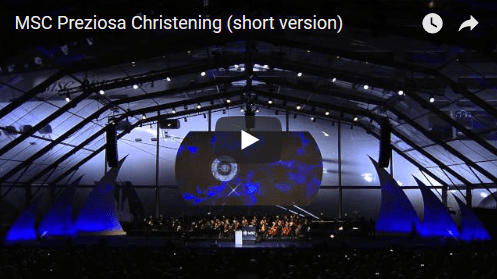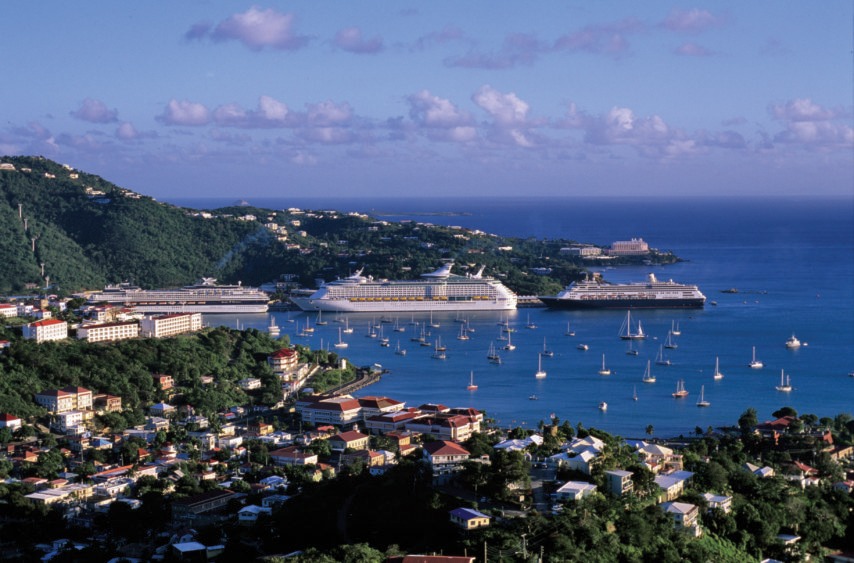
Five Reasons An Antarctic Expedition Should Be On Your Cruise Horizon
Exploring the Antarctic Peninsula aboard Silversea’s Silver Endeavour, I saw Antarctica is like no other place on earth. By the end of the cruise – as expedition leader Marieke Egan predicted most passengers inevitably do – I’d become an Antarctic Ambassador, extolling reasons to indulge in the experience.
Antarctic Scenery, Landscapes, and Seascapes
Just being in Antarctica’s austral summer from November to March, the endless daylight gives a sense of the south polar latitude. Cruising past the pristine beauty of peaked mountains gleaming white against blue skies, floating icebergs high as cathedrals, and scenic harbors framed by glaciers that calve with thunderous booms is humbling. As guides lead kayak safaris and navigate Zodiacs among bergs and ice floes, you’re destined to feel awestruck by the nature of Antarctica’s climate. And if you’re brave enough to indulge in a polar dip into the frigid waters of a quiet bay, you’ll earn a lifetime of bragging rights.
Penguins

Antarctica Bay Landscape Teaming with Penguins | Photo: Toby Saltzman
Prepare to be delighted by penguins’ antics and carefree approach as they waddle curiously toward humans. While colonies of Gentoo, Chinstrap, and Adelie penguins thrive on the Antarctic Peninsula and islands, creating rookeries both north and south of the Antarctic Circle, Emperor penguins may be found north of the Circle on Weddell Sea islands. Throughout the season, expect to see penguins porpoising – swimming like porpoises – as they seek and carry food ashore. In November, watch male penguins in full mating mode, chasing and courting females and endearingly bringing them stones to pave their nests. Around mid-December to early January, fuzzy penguin chicks appear, tucking at their parents’ feet. By February, the chicks’ fuzz has turned to feathers.
Whales, Seals, and Seabirds

Weddell Seal | Photo: Toby Saltzman
Daily encounters with wildlife enhance the joy of cruising Antarctica. Chances of seeing humpback, minke, or orca whales are best during February and March, when the cetaceans typically gather in pods, ready to migrate north. In late November, I saw several humpbacks, most often in bays where they could feed on penguins or rich patches of krill clinging to the base of sea ice and in the protected waters of Lemaire Channel.
Weddell seals sunbathed blissfully on chunks of sea ice in protected bays. Among the colony of elephant seals beached on the shore of Jenny Island, couples who loudly slapped their chests together must have been in mating rituals. Passengers on one Zodiac spotted Leopard seals chasing after a trio of porpoising penguins.

Penguins | Photo: Toby Saltzman
Antarctica thrives with seabirds, most feeding on krill at the edge of sea ice or icebergs that rolled over. The waters of Pleaneau Bay – dubbed Iceberg Graveyard for its colossal formations – teemed with seabirds diving for food. Most astonishing, the predator Southern Giant Petrel swooped in with its vast wingspan, landing without a splash lest it warns penguins waddling on the ice nearby.
Icebergs

Originating as enormous swaths of ice that calve from glaciers, icebergs come in all sizes, textures, and shapes honed by waves. Their surfaces show the stage of melting. Chunky flat surfaces show where they calved from a glacier. Smooth or pebbled surfaces mean the iceberg has rolled over in the ocean. Cruising around icebergs, close to their sapphire grottos, you hear the gurgling and popping air bubbles of melting ice.
Education

Lecture on species of penguins aboard Silver Endeavour | Photo: Toby Saltzman
Most Antarctica expedition teams include resident experts whose various lectures enhance the experience.
Expect history lectures that detail Sir Earnest Shackleton’s expeditions, early whaling stations, and scientific research stations. Marine biology and ornithology lectures include identifying species plus their existence as predators. Geology and ecology programs include elements of Antarctica’s geographic nature as a desert covered with eons of pre-historic ice. And photography sessions focus on snapping shots of a lifetime adventure, inevitably turning passengers into Antarctic Ambassadors.
Toby Saltzman
Toby Saltzman has followed her heart to pursue her passions for culture, art, history, and nature as a travel writer. Winner of many awards — including two Lowell Thomas Travel Journalism awards — Toby seeks out the joy of a place and the soul of the local people, whether trekking through Patagonia, touring vineyards in New Zealand, visiting hilltop villages in Europe, cruising to far flung pockets of the world, or embracing the beauty of her home country, Canada.
You may also like
A Page in Time… Yangon’s colonial past.
A Page in Time… Take a walk through Yangon’s colonial past By Kevin Revolinski A Myanmar tra
MSC Preziosa: Cosmopolitan Cruising
Cruise Ship Review: MSC Preziosa Gear up and then unwind through memorable moments aboard MSC Prezio
Like a Local: US Virgin Islands
LIKE A LOCAL Livin’ in the USVI By Carol Bareuther Sure, there are guidebooks that list every rest









